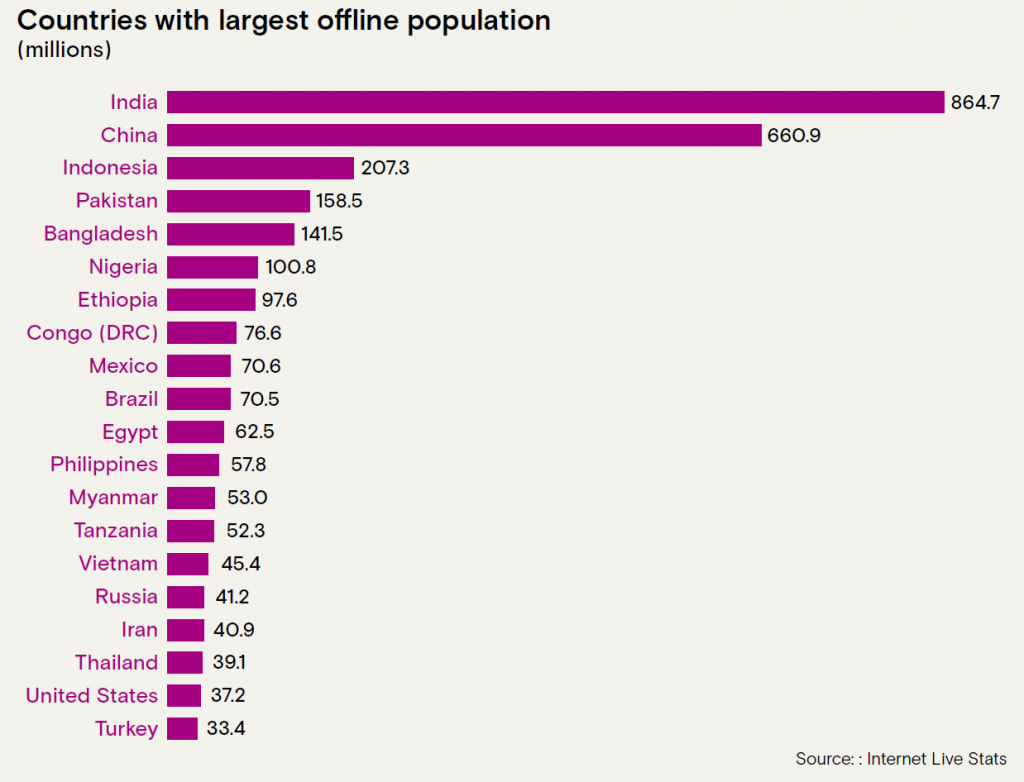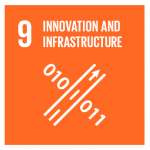
Half the world’s population cannot access the Internet
Something went wrong with the way we set about to connect the world’s population to the Internet. Are you getting impatient about this too? Don’t worry – we can fix this. We can connect the world.
Over decades the greatest minds came together and created this marvelous repository to collect, connect and share all the world’s knowledge. We developed mobile and wireless technologies to extend the reach of this infrastructure to virtually the entire planet. So how is it that in 2017 more than half the world remains disconnected from the Internet?
 Conventional wisdom has concluded that the solution to connecting the world’s billions is through the proliferation of new devices and the build-out of broadband wireless infrastructure to support them. Imagine how many more decades it might take to finally displace the current install base of handsets? How many billions of dollars – to be invested by who – governments, NGOs, corporations and charities? Will the upgrade of a few million handsets per year have any impact on billions still disconnected? What about the education and training to get these new web users acclimated to their new, literacy-requiring, eyesight-requiring devices?
Conventional wisdom has concluded that the solution to connecting the world’s billions is through the proliferation of new devices and the build-out of broadband wireless infrastructure to support them. Imagine how many more decades it might take to finally displace the current install base of handsets? How many billions of dollars – to be invested by who – governments, NGOs, corporations and charities? Will the upgrade of a few million handsets per year have any impact on billions still disconnected? What about the education and training to get these new web users acclimated to their new, literacy-requiring, eyesight-requiring devices?
Our first computer interfaces were visual by necessity. At first we used keyboards to speak to computers because they were the only feasible input devices yet conceived; the earliest machines spoke back in punch-cards and printouts. Then we evolved to video displays because the punch-cards and printouts were untenable limiters to advanced computing. As memory, processors and video improved, it seemed only logical that our visual-centric interface to computers should evolve accordingly. And so we’ve now arrived at a place where intelligent client devices (smartphones) – with processor, display and local memory – are an assumed requirement to visit and enjoy the mobile web.
Yet the high-broadband, processor-intensive video-centric Internet we’ve created is inaccessible to billions. Does the Internet really require video, keyboards, memory and processing power to be impactful to humanity? Surely a good portion of the world’s knowledge can be imparted via audio…after all, audio remains the most pervasive wireless information protocol in use over the past 110 years. You needn’t look further than your AM/FM radio receiver to perceive a model for wireless audio information dissemination.
Mankind’s first massively successful wireless information service was and still is terrestrial radio (displacing technologies like the carrier pigeon, smoke signals, semaphore and the aldis lamp). Today radio remains a primary information source more pervasive than the Internet or television or computers. The only mobile technology more ubiquitous among our planet’s inhabitants than radio is…the telephone.
The mobile telephone is a two-way radio. It transmits as well as receives, which makes it an interactive device, which terrestrial radio is not. Interactivity makes the telephone a feasible candidate for an Internet interface that is familiar, friendly, yet device and infrastructure agnostic – like radio. The only thing necessary is the appropriate intelligent agent interface that acts as audio web browser and personalized guide to the aural web. Such an interface requires only the touchtone keypad and human voice; a display-free Internet is not only as familiar as terrestrial radio; it is optimized for the vision-impaired and does not discriminate against the illiterate.
Most existing web content is audio-friendly. The Economist World Intelligence Unit recently said it best: “For people to benefit from the Internet, it must not only be available and affordable. It also must be relevant to their lives and they must have the skills and confidence to use it.” That’s the mission of SaraConnects. The technology of Sara is designed to instantly transform any telephone into a smart, personalized interactive radio. Access requires only a dialed telephone call or text. No apps, no data, no gigs, no restrictions. Sara’s artificial intelligence is optimized for audio and voice and is designed for rapid deployment so we can connect the world’s unconnected billions in months, not decades, and for a fraction of the ultimate cost of deploying more broadband and compute-intensive alternatives. Can you help us to connect the world? Please join us: https://saraconnects.world/contact






